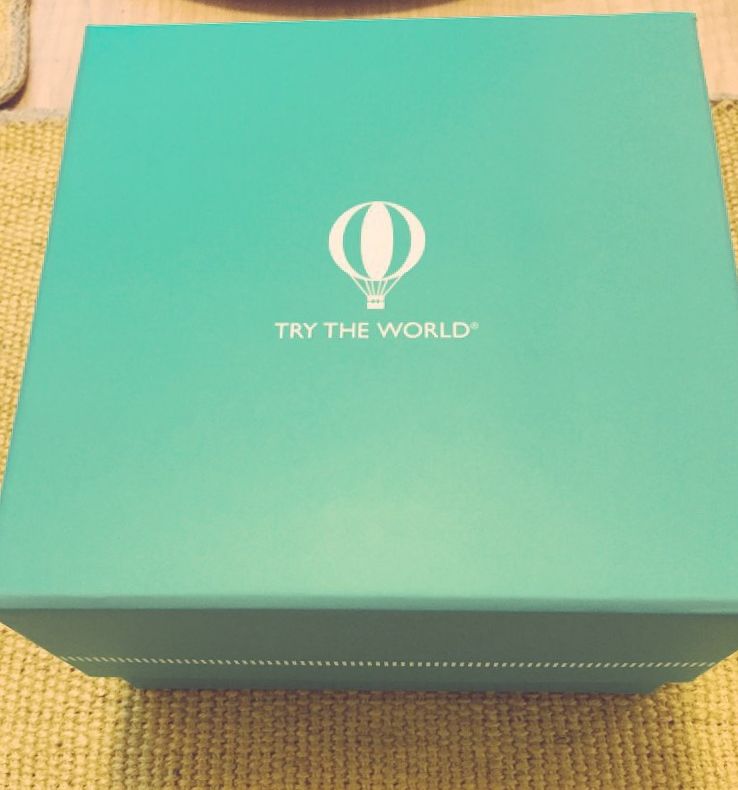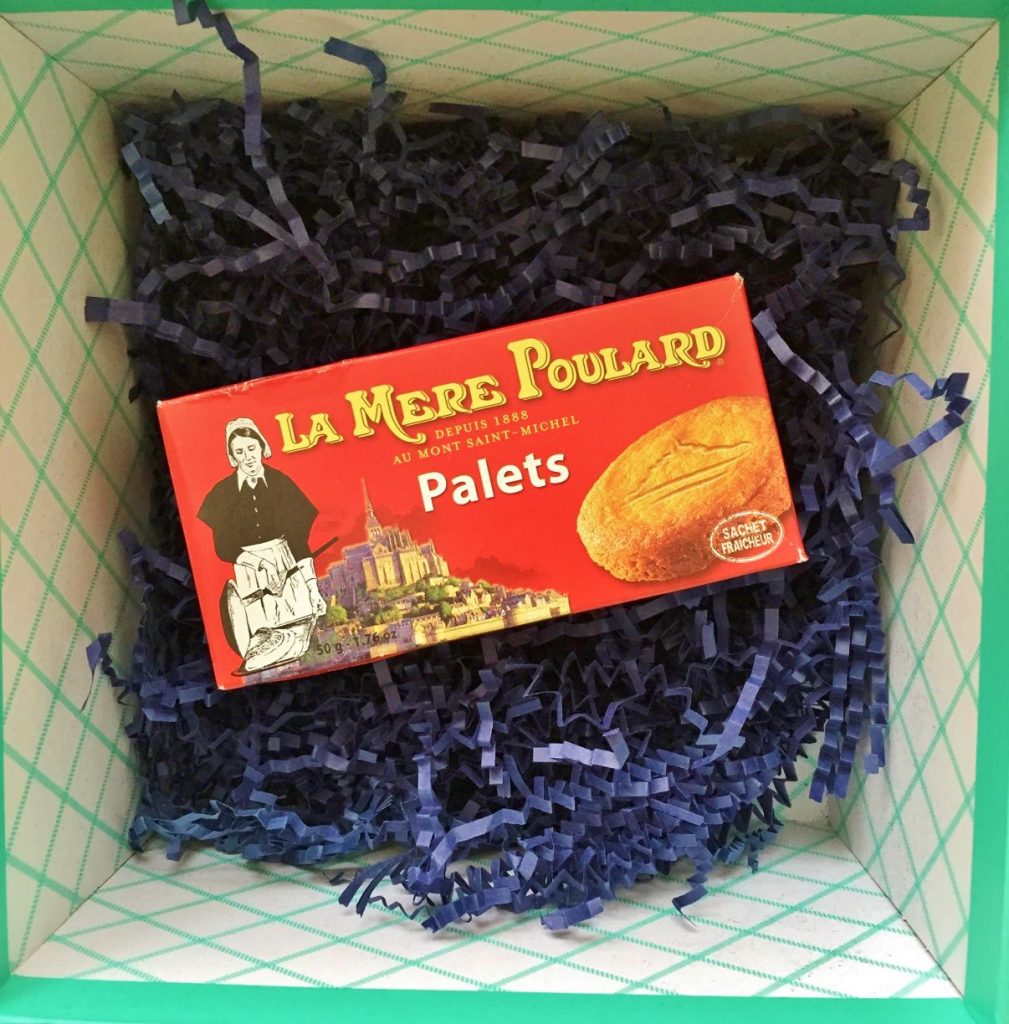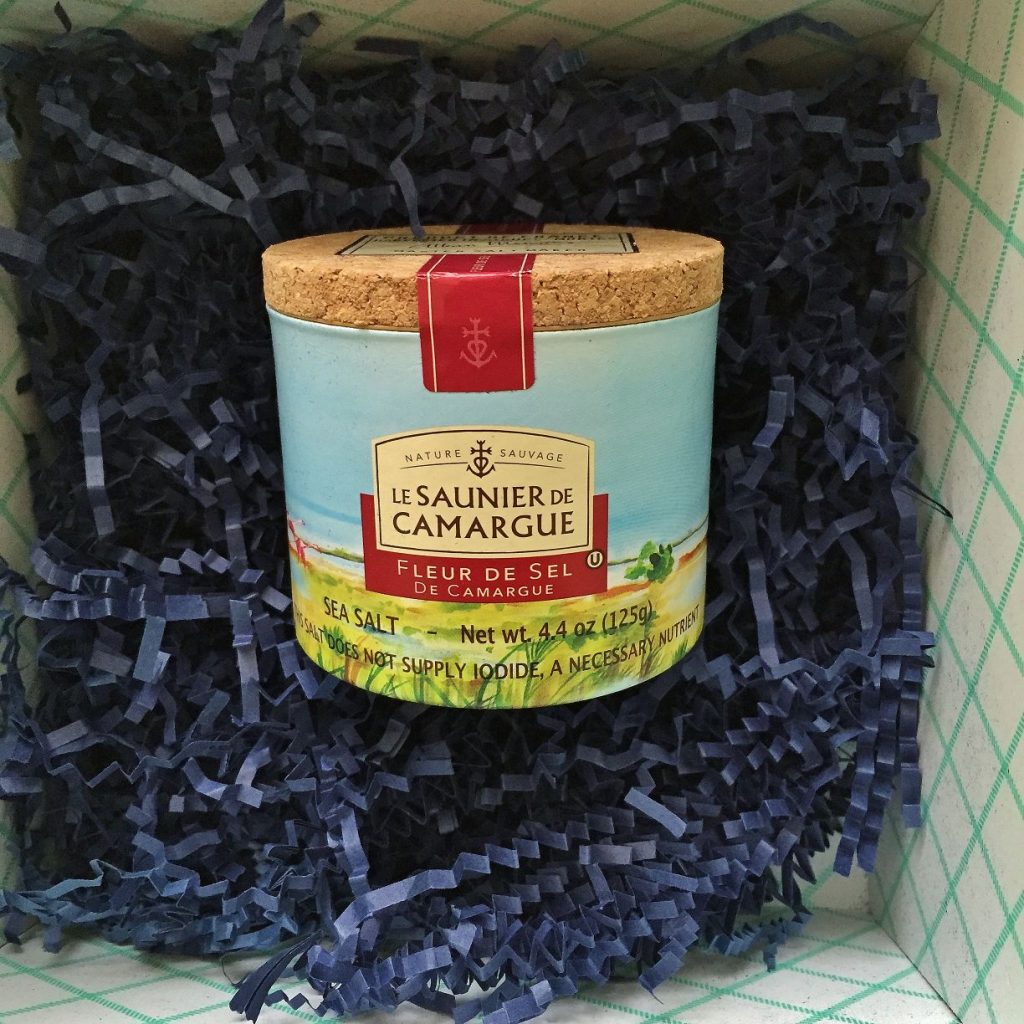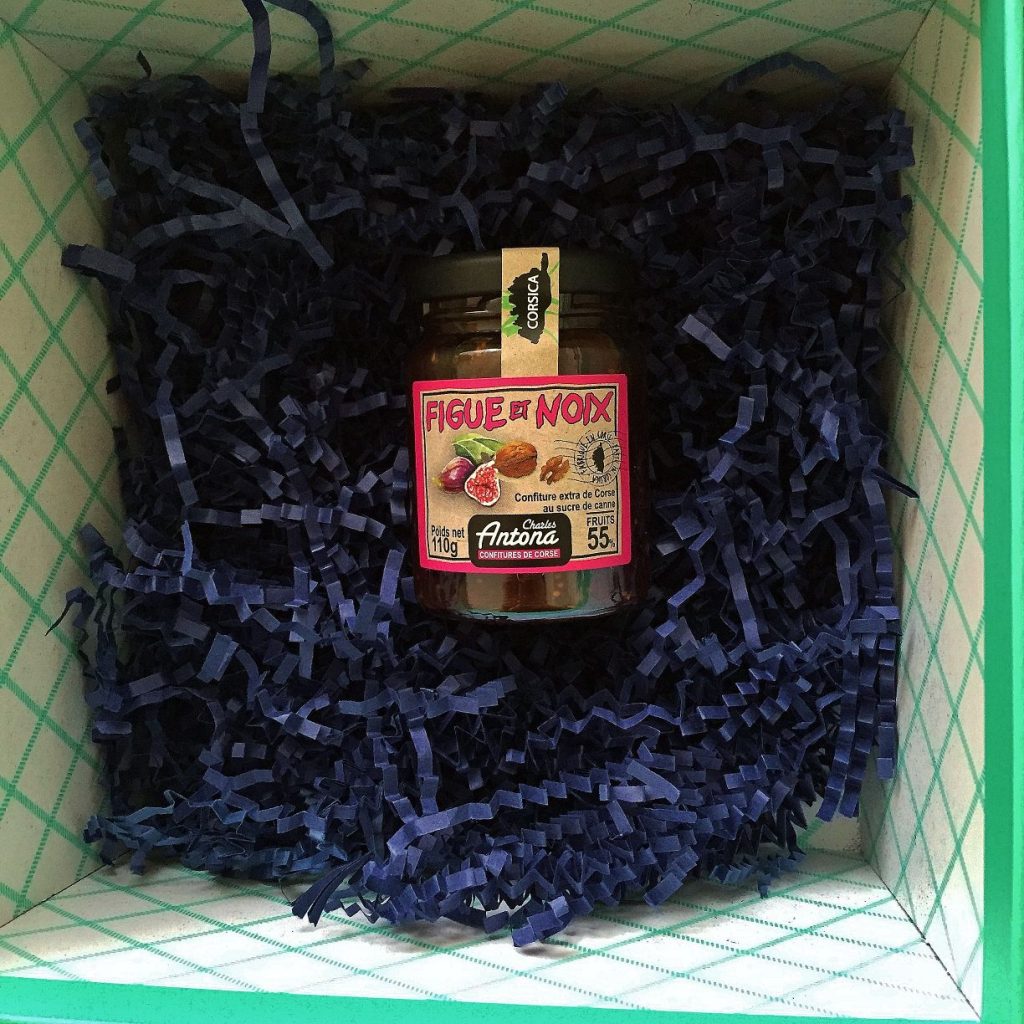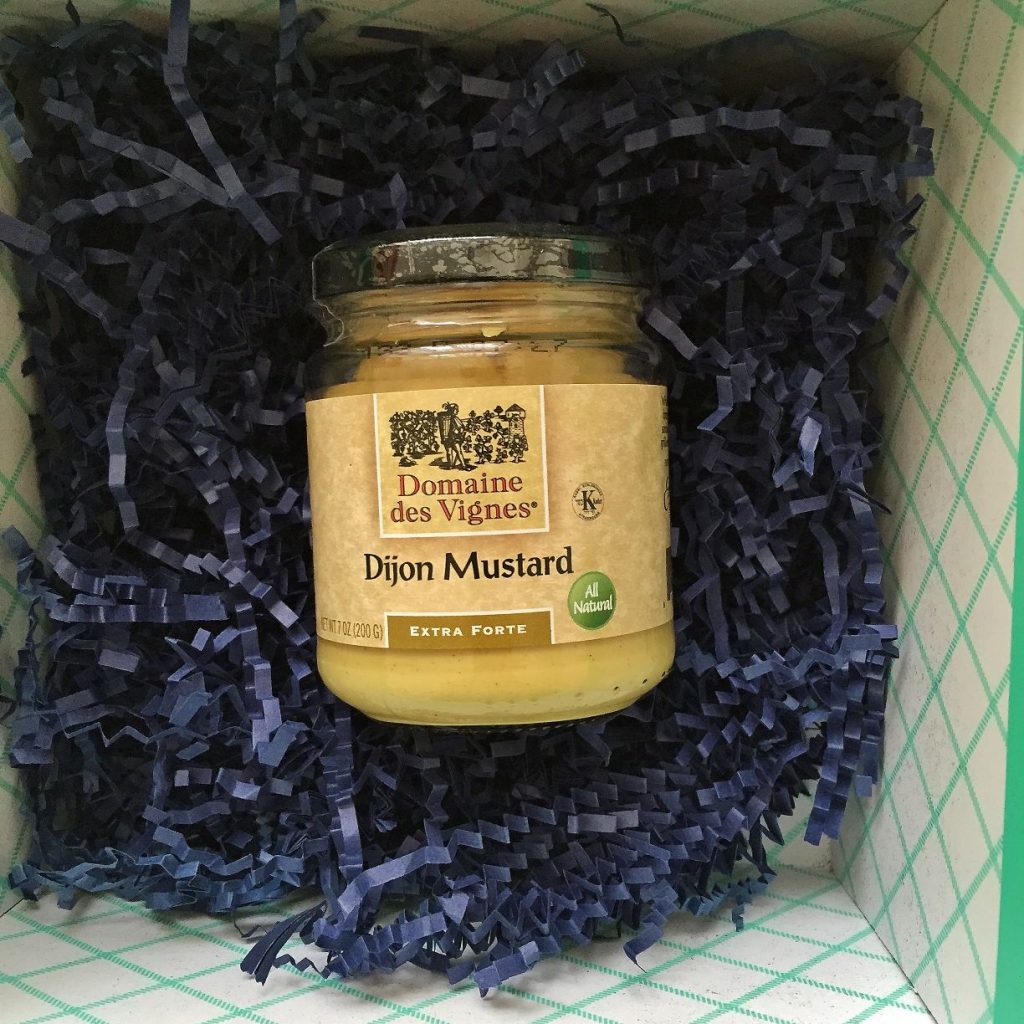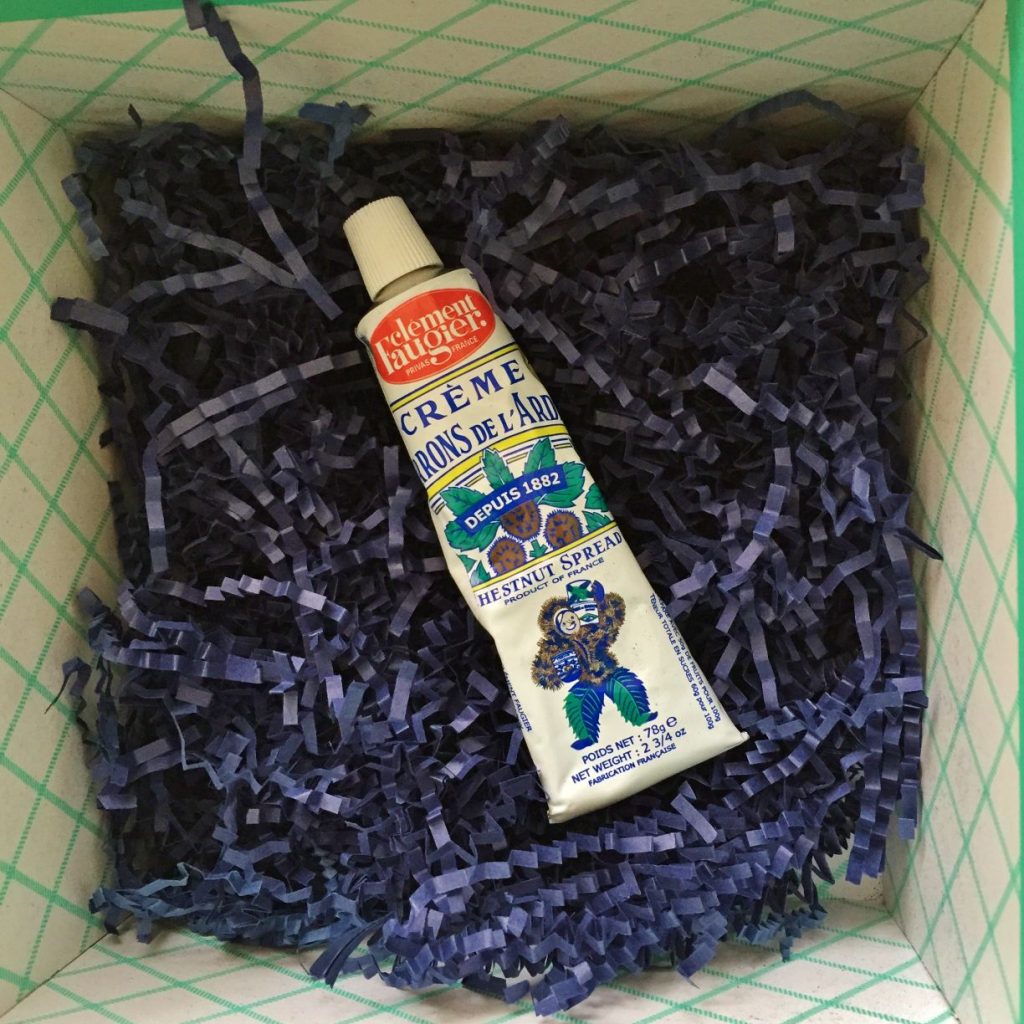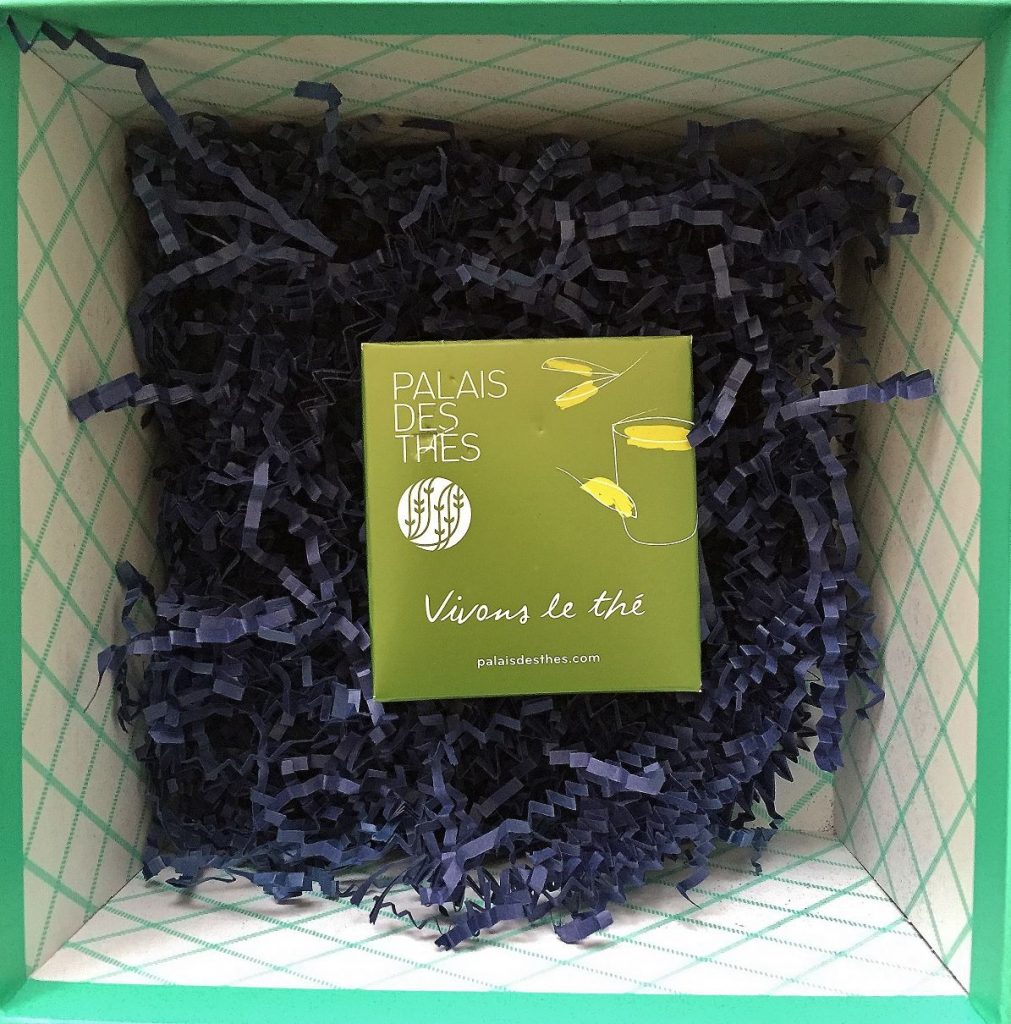Gourmet artisan products delivered to your door have become a trendy upgrade from Peapod grocery delivery. The idea: subscribe to a service and get a small, curated batch of artisan-made products delivered right to your door — a tempting service for foodies everywhere. Try The World does just this, but curates the products with the help of global chefs to bring you a taste of a different country every two months.
By subscribing, users receive a new box every two months for $39, with discounts if you buy more boxes. In the box you can expect to find rare treats from around the world, most coming from small, family-owned companies.
I decided to give the Paris box a try. The box is a stunning Tiffany’s blue, and inside, gourmet treats sit atop deep blue confetti. The box comes with a French culture guide and a card explaining the origin of each product — a touch that adds personality and a sense of locality to the product. It gives you a sense of appreciation for the artisanal value of each creation.
Here is a breakdown of what was inside:

Try The World fig jam
Charles Antona Figue et Noix — Fig and Walnut Jam:
This fig and walnut jam was sweet but not sugary, and it had a nutty, rich finish. With each bite, there was a little crunch from the fig seeds. The jam was a perfect addition to a soft raisin and nut bread covered with creamy, salty goat cheese. The owner, Charles Antona, grows the fruit for his preserves, which come in many flavors, on almost 25 acres of family-owned land. Local farmers and artisans help to harvest the fruit. Antona sticks to his grandmother’s original recipe, combining his fruit with Mediterranean herbs for a sweet rustic jam.

Try The World chestnut spread
Clement Faugier Creme de Marrons de l’Ardèche — Chestnut Spread:
The chestnut spread had a unique taste. It was mildly sweet but had a rich fall spice to it. The spread was gritty, with a heartiness from the chestnuts. The spread, which comes in a tube, is made with chestnuts harvested in Ardèche, a region famously known for being the largest producer of chestnuts in France.

Try The World salt
Le Saunier de Camargue Fleur De Sel — Sea Salt:
This fine finishing salt felt like fresh snow powder. To the touch, this delicate salt is not like the hard crystals we are used to, but rather so soft it feels like you could crush it in your hands. In the culture guide, you can see a picture of the deep maroon salt flats, where “sauniers,” or harvesters, rake the sea water to collect the sun-dried salt crystals. The guide suggests carefully pinching the salt to “sprinkle over buttered crostini, meats, or desserts just before serving.” So soft you can’t feel it on your tongue, the Fleur De Sel gave a subtle, salty finish to a bite of fresh crusty bread topped with a thin piece of prosciutto.

Try The World mustard
Domaine des Vignes — Dijon Mustard:
This Dijon mustard was creamy, rich and a little sweet. The vinegar left a hint of light acidity, while the kick from the mustard seeds rounded out the bite spread over another piece of crusty bread with a thin slice of savory prosciutto. This classic spread, seen on every French charcuterie, was made in the city of Dijon, the mustard capital of France. The mustard is made with vinegar distilled from Bordeaux and Charente wines — using one classic French product to make another. The mustard is best enjoyed spread onto sandwiches or glazed over meats.

Try The World cookies
La Mère Poulard Palets — Butter Cookies:
The first bite of one of La Mère Poulard’s perfect little shortbread cookies was the ideal combination of softness and crunch. The sweet, buttery crumbs evaporate on your tongue, leaving a faint salty trace from the butter. The famous cookies, which have been around since 1888, are made with French salt and butter from the Mont Saint-Michel in Brittan. According to the culture guide, “Mrs. Poulard first became famous in Mont Saint-Michel by feeding pilgrims who were on their way to the medieval cathedral on the island.” The cookies were perfectly paired with the next ingredient, an herbaceous, floral tea. Dipping the cookies in the tea is the only way to go.

Try The World tea
Palais des Thés — Fine Tea:
This light, flowery, aromatic blend of black and green tea leaves comes beautifully wrapped in a white steeping bag. Created by two tea lovers, the Palais des Thés blends floral teas, plants and flowers to create this mixture called Thé des Moines. Along with his team, founder François-Xavier Delmas travels around the world to find the richest teas. He works with Carine Baudry, an aroma expert, to artfully craft the perfect blend of taste and fragrance that spirals off the steaming cup. The box came with two other flavors, including Thé du Hammam, a green tea with date pulp, orange blossom, rose and berries; and Tamaryokucha Impérial, a fragrant Japanese green tea.
Since the company works with smaller producers around the world, the selection in each box varies slightly. Inside the box, the little card explains “What can I find in my Paris Box?” to give you a sense and a taste of a locally curated culture. The card features a picture that notes if the product is created by a family business, a traditional recipe, supports the local community, is all-natural or organic or is sustainably grown.
Inside the culture guide, you will find a “typical meal” of the country, including a recipe that uses one or more of the ingredients inside the box. The Paris box included a recipe for steak tartare, finished with the Fleur De Sel sea salt. On the following pages, there was a Parisian playlist with both classics and contemporary selections, French movies, a French poem and tips for a visit to Paris ranging from exploring culture at The Louvre Museum to eating the best ice cream in the capital at Maison Berthillon.
Boxes by country are available online. One curated package, the “Cookie Tour of the World,” includes traditional sablés from France, butter palmiers from Morocco and sweet and savory cookies from Argentina. So far, boxes are available from Argentina, Brazil, France, Italy, Japan, Morocco, Spain and Thailand.
Subscribers have the option to pay $39 every two months, $105 every six months or $198 every 12 months. The price comes out to be about the same as most other gourmet boxes charge. However, subscribers will have to sacrifice quantity for quality, since the Try The World Box only delivers once every two months.
Currently, Try The World cannot customize boxes for any dietary restrictions or food allergies, and they do not ship internationally, but other subscription-based artisan delivery boxes are flooding the markets.
The Carnivore Club includes curated specialty meat products, while Escape Monthly subscription boxes offer gourmet snacks, relaxation tips, bath and beauty items and travel guides. Different subscription boxes curate a vast variety of gourmet products including coffee, teas, microbrews, Indian spices and even pickles. The popular Hatchery box sends customers a variety of spreads, condiments, jams, honeys, syrups, cooking sauces, oils, vinegars, salts, spices, seasoning, baking ingredients and cocktail mixers for $20 a month.
Try The World might not be the most cost-effective option, but for foodies who are willing to explore and want a personal, high quality batch of ingredients from around the world delivered to them, il est magnifique.

